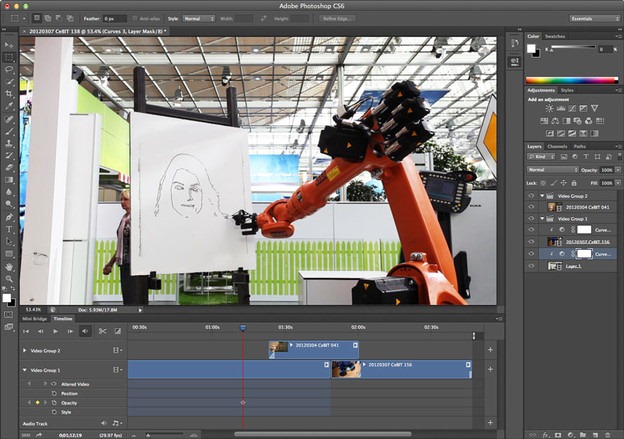Make contact form and send email in PHP
Having a contact form on your web site is vital when you need to know what your site visitors think about your web site. We will first create a simple contact form with 3 fields - Email address, Name, Comments. I will use a table to align the 3 fields and the Send button. Create a new file and paste the code below in it. Save it as test.php and upload it to your web server. Now, you have a web page (http://www.yourdomain.com/test.php) with a simple contact form on it.
<form action="test.php" method="post">
<table width="400" border="0" cellspacing="2" cellpadding="0">
<tr>
<td width="29%" class="bodytext">Your name:</td>
<td width="71%"><input name="name" type="text" id="name" size="32"></td>
</tr>
<tr>
<td class="bodytext">Email address:</td>
<td><input name="email" type="text" id="email" size="32"></td>
</tr>
<tr>
<td class="bodytext">Comment:</td>
<td><textarea name="comment" cols="45" rows="6" id="comment" class="bodytext"></textarea></td>
</tr>
<tr>
<td class="bodytext"> </td>
<td align="left" valign="top"><input type="submit" name="Submit" value="Send"></td>
</tr>
</table>
</form>
Then we will need the actual PHP code which will send the email when the above form is submitted. We will need to define the email that the message should be sent to ($ToEmail) and also the subject for the message that will be sent ($EmailSubject). Change youremail@site.com to your email address where the message should be sent and also add an appropriate subject for you message. The $mailheader variable is used to define the email message header. We set the From, Reply-To and Content-type fields for the message. There are some more fields that can be used but for this example we will only use these 3. Depending on your server configuration you may need to have the From and Reply-to fields be a valid email address from your server.If you have a domain name mysite.com, then you should use a valid email address such as contact@mysite.com. In this example I am sending the email using the actual email address that is submitted via the form on site. Next all the data submitted via the web form is taken from the $_POST variable and saved in the $MESSAGE_BODY variable. Using the
nl2br function you will make all the new lines in your comments box appear as new lines in your email message too. Having all the needed data for our email message we will use the
mail() function which will send that email for us.
<?php
$ToEmail = 'youremail@site.com';
$EmailSubject = 'Site contact form ';
$mailheader = "From: ".$_POST["email"]."\r\n";
$mailheader .= "Reply-To: ".$_POST["email"]."\r\n";
$mailheader .= "Content-type: text/html; charset=iso-8859-1\r\n";
$MESSAGE_BODY = "Name: ".$_POST["name"]."<br>";
$MESSAGE_BODY .= "Email: ".$_POST["email"]."<br>";
$MESSAGE_BODY .= "Comment: ".nl2br($_POST["comment"])."<br>";
mail($ToEmail, $EmailSubject, $MESSAGE_BODY, $mailheader) or die ("Failure");
?>
All we have to do now is to combine the web form and email sending code into a single page. We will use an IF statement to check if the form has been submitted and if so it will send that email and will show a "Your message was sent" message on the screen instead of the web form.
<?php
if ($_POST["email"]<>'') {
$ToEmail = 'youremail@site.com';
$EmailSubject = 'Site contact form ';
$mailheader = "From: ".$_POST["email"]."\r\n";
$mailheader .= "Reply-To: ".$_POST["email"]."\r\n";
$mailheader .= "Content-type: text/html; charset=iso-8859-1\r\n";
$MESSAGE_BODY = "Name: ".$_POST["name"]."<br>";
$MESSAGE_BODY .= "Email: ".$_POST["email"]."<br>";
$MESSAGE_BODY .= "Comment: ".nl2br($_POST["comment"])."<br>";
mail($ToEmail, $EmailSubject, $MESSAGE_BODY, $mailheader) or die ("Failure");
?>
Your message was sent
<?php
} else {
?>
<form action="test.php" method="post">
<table width="400" border="0" cellspacing="2" cellpadding="0">
<tr>
<td width="29%" class="bodytext">Your name:</td>
<td width="71%"><input name="name" type="text" id="name" size="32"></td>
</tr>
<tr>
<td class="bodytext">Email address:</td>
<td><input name="email" type="text" id="email" size="32"></td>
</tr>
<tr>
<td class="bodytext">Comment:</td>
<td><textarea name="comment" cols="45" rows="6" id="comment" class="bodytext"></textarea></td>
</tr>
<tr>
<td class="bodytext"> </td>
<td align="left" valign="top"><input type="submit" name="Submit" value="Send"></td>
</tr>
</table>
</form>
<?php
};
?>



